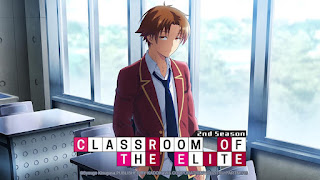I enjoy watching anime, a passion that originated during my
teenage years with Dragonball Z. What draws me to anime is its unique ability
to convey aspects that live-action cannot capture. While I appreciate anime,
it's important to acknowledge its flaws. There are certain recurring tropes
that, when considering a new series, one should investigate. Some of these
tropes are harmless but annoying, while others are outright distasteful. For
those venturing into the world of anime or contemplating allowing their
children to explore it, I hope this list proves helpful. Here are five
deal-breakers when it comes to anime.
While a harmless
trope, it can limit the creativity of a series. In many Shonen anime, the main
protagonist inevitably faces the final boss, sidelining opportunities for other
supporting characters to grow. An example is Fairy Tail, where Natsu
consistently confronts the opposing team boss, despite other characters being
equally capable such as Gray or Erza. This trope could be improved by allowing
other characters to take on the main villain in the arc especially when they are
better suited for. For example, If the protagonist has fire magic and the boss
also has fire magic, then let the supporting character with water magic face
the villain.
This overplayed
trope involves the protagonist receiving an unexpected power boost to defeat
the villain when on the brink of defeat. Often tied to the power of friendship.
It’s ironic when an anime has dark themes not suitable for children, but the heroes
use the power of friendship. Naruto is a notable example where friendship plays
a significant role in the protagonist's strength.
This trope,
featuring characters who sexualize women, can be off-putting and occurs too
frequently in anime. Characters like Master Roshi in Dragonball or Daru in
Steins;Gate exemplify this issue, potentially deterring some viewers. Perverted
characters tend to have nose bleeds indicating that they are having an impure
thought.
Aligned with the
previous trope, the objectification of women in anime is a concerning trend.
Despite character development, female characters are often depicted in
impractical attire with unrealistic bodies. One Piece is cited as an example,
where every female character is scantily clad. Which should discourage viewers
with moral standards.
This uncomfortable
trope, where a sister develops romantic feelings for the main protagonist, is a
definite reason to stop watching an anime. Instances like those in Sword Art
Online can be particularly unsettling. Typically, if the main protagonist has a
sister, then she will have romantic feelings towards him. The exception being
Demon Slayer.
Conclusion
Reflecting on these tropes, I invite you to share your own anime pet peeves. Despite these drawbacks, there are numerous anime series that avoid these pitfalls. I recommend the following, excluding Steins;Gate due to its inclusion of the perverted character trope:
1. Bungo Stray Dogs
2. Spy X Family
3. Hunter X Hunter
4. Marshle: Magic and Muscles
(Yes, this breaks the first tope, but it is still good)
5. Love is War
6. Ranking of Kings
7. Log Horizon
8. Classroom of the Elite















No comments:
Post a Comment